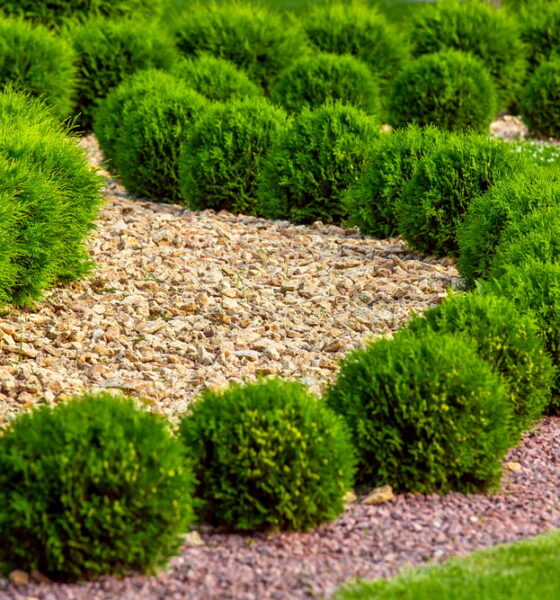

Features
Tried and True Eco-Friendly Landscaping Techniques to Practice
More Americans than ever are expressing concerns about the environment. A survey by Pew Research showed that 63% of Americans feel that climate change is having a detrimental impact on the environment.
Despite the growing awareness of environmental concerns, many people still don’t know what steps to take to actually help the planet. Some people appreciate the importance of making obvious changes like switching to solar energy. However, they should take other steps as well if they want to live a truly sustainable lifestyle. This includes following eco-friendly landscaping tips.
Embracing Eco-Friendly Landscaping Ideas in 2022
There is no disputing the fact that environmental awareness is at an all-time high in 2022. And if you’ve kept up with the latest climate science in recent years, you know just how important of a role each of us plays in keeping the environment sustainable for generations to come. Climate change is affecting everything from the seasons to our food supply and poses an existential threat to many species.
Recent climate science has shown that the planet is on track to warm considerably by the turn of the 22nd Century. And though many of us won’t be around to see if science was right, this doesn’t mean that we should all sit back and not do anything about it.
Carbon levels are at their highest levels ever recorded. And as temperature rise always follows a rise in carbon, it’s only a matter of time before we’re all living in a much different (and much warmer) world. But thankfully, even your landscape can help create a more sustainable environment.
If you’re looking for a way to help out Mother Nature and keep your property looking great, the following will offer a few tips for sculpting your property the natural way.
Planting Native Grasses & Plants
Though you may love the look of Bermuda grass or exotic plants, taking plants and grasses out of their natural habitat actually creates a problem in many ways.
First, exotic plants and greasses hjave difficulty adapting to the local soil. Second, local insect and animal populations aren’t adapted to this type of vegetation. And third, they require a different amount of rainfall and relative humidity to flourish.
A few benefits of native grasses and plants are as follows:
- Provides a habitat for beneficial local wildlife
- Acclimated to local rainfall amounts (no need for extra watering)
- Naturally resistant to local pests and disease
- No need for fertilizer
When choosing the right plants for your landscape, consult with your local gardener to understand which plants and flowers are native to your area. And during routine lawn maintenance, make sure you tell your lawn care professional to take extra special care of your native flora.
Using Mulch
Mulch is an eco-friendly technique that’s used all across the country, and it’s extremely healthy for your lawn. But many homeowners are unaware of the eco-friendly benefits that come along with using mulch.
Mulch actually helps to regulate soil temperature and helps the soil to retain much needed moisture. In addition, this helps to keep plants alive and healthy as well as mitigating weed growth in flower beds. And organic mulch such as bark, pine straw, leaves and wood chips have many other benefits as well.
For example, organic mulch also breaks down over time to add valuable nutrients back into the soil. And this will reduce your need for using harmful chemical fertilizers that can end up in the groundwater which eventually lead to the pollution of streams and rivers throughout the local watershed.
In addition, as grass is perhaps one of the neediest living organisms that use water, adding mulch around your yard as a landscaping technique can reduce your water usage by up to 50 percent year-round. So not only will you be using less water, this is also great news for your wallet.
Use Terracing on Slopes
Slopes can cause significant problems on any property. Not only will rainfall cause runoff and soil erosion, this can also weaken the foundation of your home. But you can also use slopes to your advantage by terracing.
Terracing basically involves leveling off the area on the bottom of the slope into a flattened bed where you can plant native grasses and other plants that will act as a buffer from runoff and soil erosion. These areas are perfect for local wildflowers, herbs, mulch, and other native plants that you can use to beautify your lawn.
Flat planted areas allow rainwater to soak into the soil instead of running off downslope. And perhaps the greatest benefit of terracing is that it keeps your lawn hydrated enabling you to reduce your use of water during the planting and growing season.
Additionally, terracing with local grasses and flowers also beaufoys your property and attracts local bees, butterflies, moths, and other beneficial pollinators that can help keep the local habitat healthy and functioning properly.
Follow the Right Eco-Friendly Landscaping Tips
There are a lot of steps that you can follow if you want to live a sustainable lifestyle. One of the most important things that you can do is make sure that you use eco-friendly landscaping techniques. Those listed above will make a big difference.
All in all, there are a variety of ways to make your p[ropery both beautiful and environmentally sound. And the more techniques you incorporate, the better off your property will be when it comes to supporting the local environment. Remember, we all have a part that we can play in keeping a sustainable environment, and one of the best ways is to start right at home.


 Environment10 months ago
Environment10 months agoAre Polymer Banknotes: an Eco-Friendly Trend or a Groundswell?

 Environment11 months ago
Environment11 months agoEco-Friendly Home Improvements: Top 7 Upgrades for 2025

 Features9 months ago
Features9 months agoEco-Friendly Cryptocurrencies: Sustainable Investment Choices

 Features10 months ago
Features10 months agoEco-Friendly Crypto Traders Must Find the Right Exchange




























